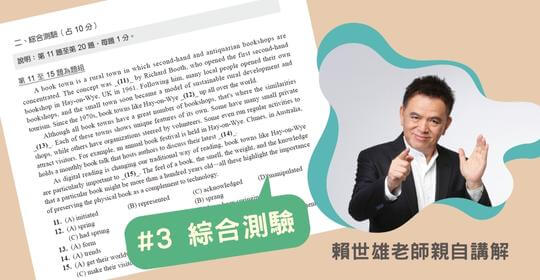
賴世雄老師親自剖解111年大學學測英文試題,逐題解析,幫助考生掌握108課綱考題新趨勢。
延伸閱讀 >> 【111年學測英文試題講解】#2 綜合測驗 Part 1
111年升大學學測英文試題
二、綜合測驗(占 10 分) 說明︰ 第 11 題至第 20 題,每題 1 分。
第 16 至 20 題為題組
Airline passengers may have noticed that all plane windows have rounded edges, instead of the hard corners commonly found in our house. The round windows are indeed pleasant to the eye, but they actually were designed for reasons _(16)_ aesthetics.
In the early days of aviation, plane windows _(17)_ square in shape. Then as commercial air travel became popular in the 1950s and airplanes began flying higher and faster, three planes mysteriously broke apart in midair. The cause? Square windows. Scientists found that sharp corners are natural weak spots where stress concentrates. The problem is _(18)_ when airplanes fly at higher altitudes, where the difference between the inside and outside pressure increases, causing added stress. When subjected to repeated pressurization high in the sky, the four corners on a square window may _(19)_.
Curved windows, on the other hand, distribute stress around more evenly, reducing the likelihood of cracks or breaks. Circular shapes are also stronger and resist deformation, and therefore can _(20)_ extreme differences in pressure inside and outside of an aircraft.
Thus, round windows are a major safety innovation that keeps planes from disintegrating mid-flight. They are also used on ships and spacecraft for their greater structural integrity.
16. (A) contrary to (B) except for (C) more of (D) other than
17. (A) used to be (B) were to be (C) would have been (D) must have been
18. (A) disguised (B) understood (C) confronted (D) intensified
19. (A) cause conflict (B) rebuild strength (C) spell disaster (D) endure shock
20. (A) tolerate (B) improve (C) justify (D) obtain
題組翻譯及選項解析如下:








